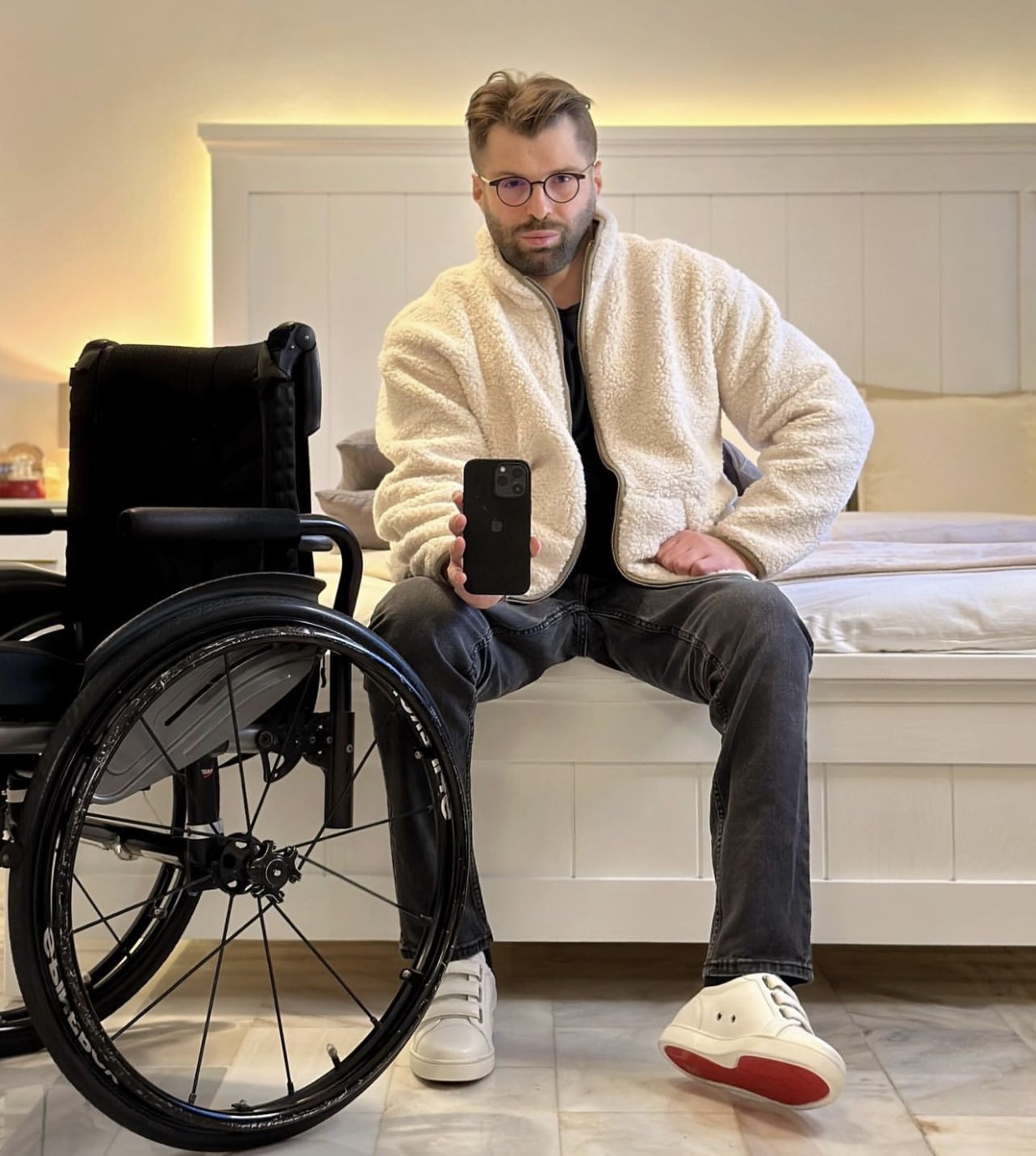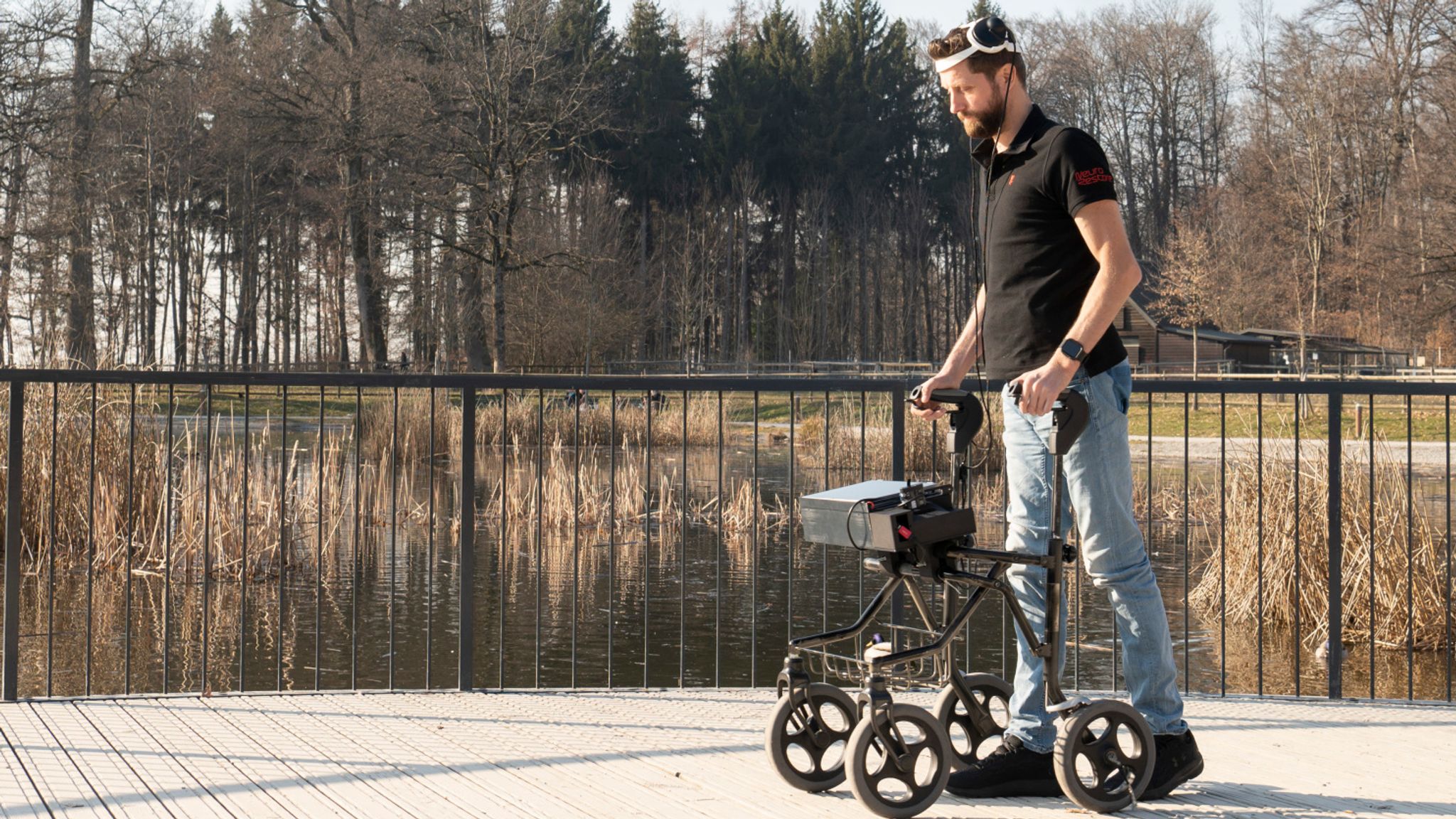A paralysed man has been able to walk again after communication was re-established between his brain and spinal cord using a wireless “digital bridge”.
The so-called brain computer interface is made up of two electronic implants, one each in the brain and spinal cord.
The former is placed above the region of the brain responsible for controlling leg movements, and can decode the electrical signals generated when we think about walking.
Similarly, the other implant is positioned over the part of the spinal cord that controls the legs.
Working together, scientists say the groundbreaking technology “transforms thought into action” – repairing the broken connection between the brain and the region of the spinal cord that controls movement.
The first patient was a 40-year-old Dutchman, engineer Gert-Jan Oskam, who suffered a spinal cord injury in a bike accident while working in China in 2011.
It had left him paralysed, but he noticed improvements within days of surgeons calibrating the implants.
The most surprising thing I think happened after two days,” Mr Oskam said.
“Within five to minutes, I could control my hips.”
Since then, after “a long journey” of training, the patient has been able to walk, climb stairs and navigate ramps.
He has also rediscovered the “simple pleasure” of standing with friends at a bar.
The implants remained effective after a year, including when Mr Oskam was unsupervised at home.
He was treated by neuroscientists and neurosurgeons from Switzerland’s Lausanne University Hospital and the University of Lausanne, and the Swiss Federal Institute of Technology Lausanne.
The implants themselves were developed by the French Atomic Energy Commission.
How does the technology work?
Guillaume Charvet, head of the project at the commission, said the implants use “adaptive artificial intelligence” to decode movement intentions from the brain in real time.
Once AI identifies the relevant signals, they are converted into sequences of electrical stimulation for the spinal cord, which activate the leg muscles and prompt the desired movement.
Remarkably, the patient experienced improvements in his sensory perceptions and motor skills that were maintained even when the digital bridge was switched off – allowing him to walk with crutches.
Professor Gregoire Courtine said this suggests the digital bridge not only repaired the man’s spinal cord, but also “promotes the growth of new nerve connections”.
Mr Oskam is the only patient who the digital bridge has been tested on, but it is hoped the technology could be used to restore arm and hand functions in future.
It could also be applied following other causes of paralysis, such as a stroke.
The findings have been detailed in the journal Nature.
By Sky News







